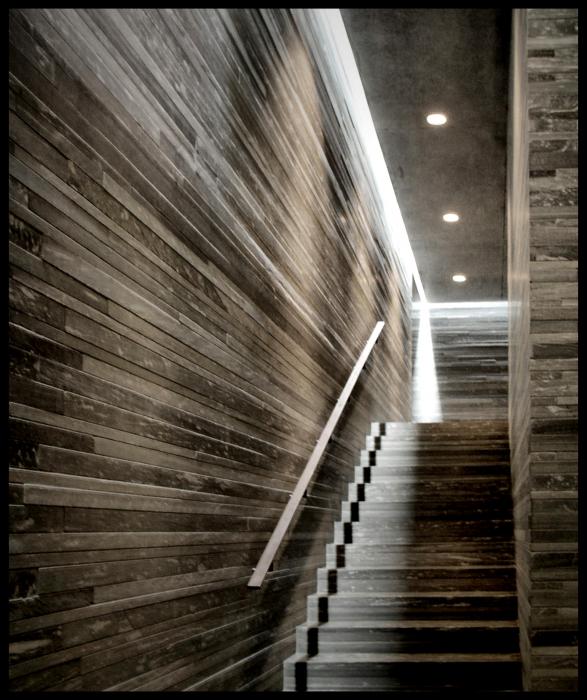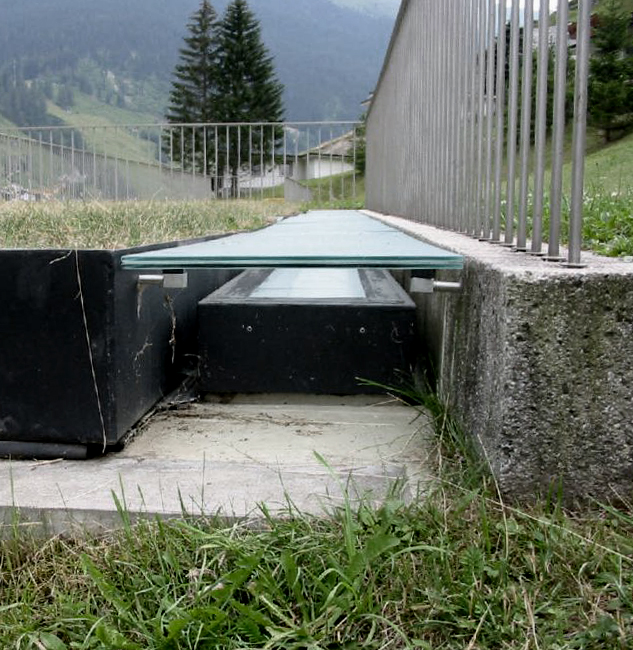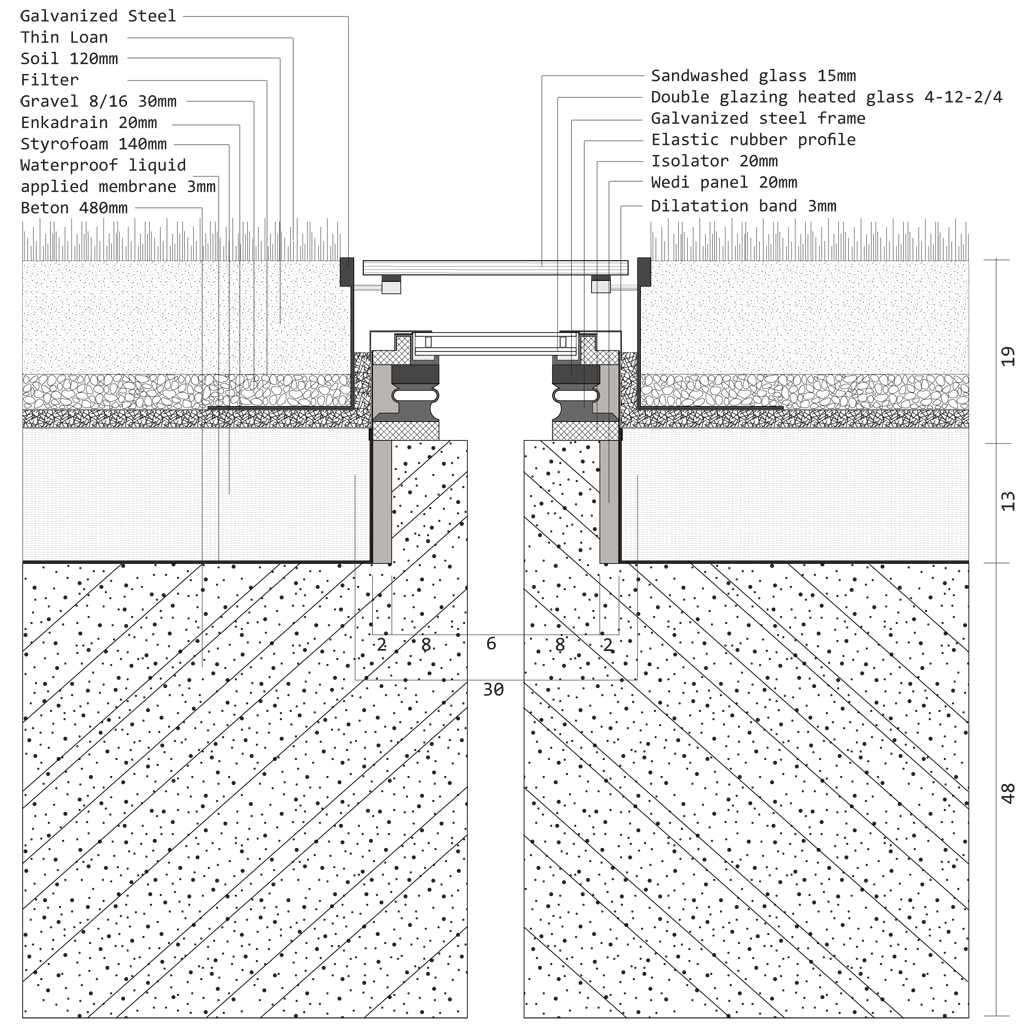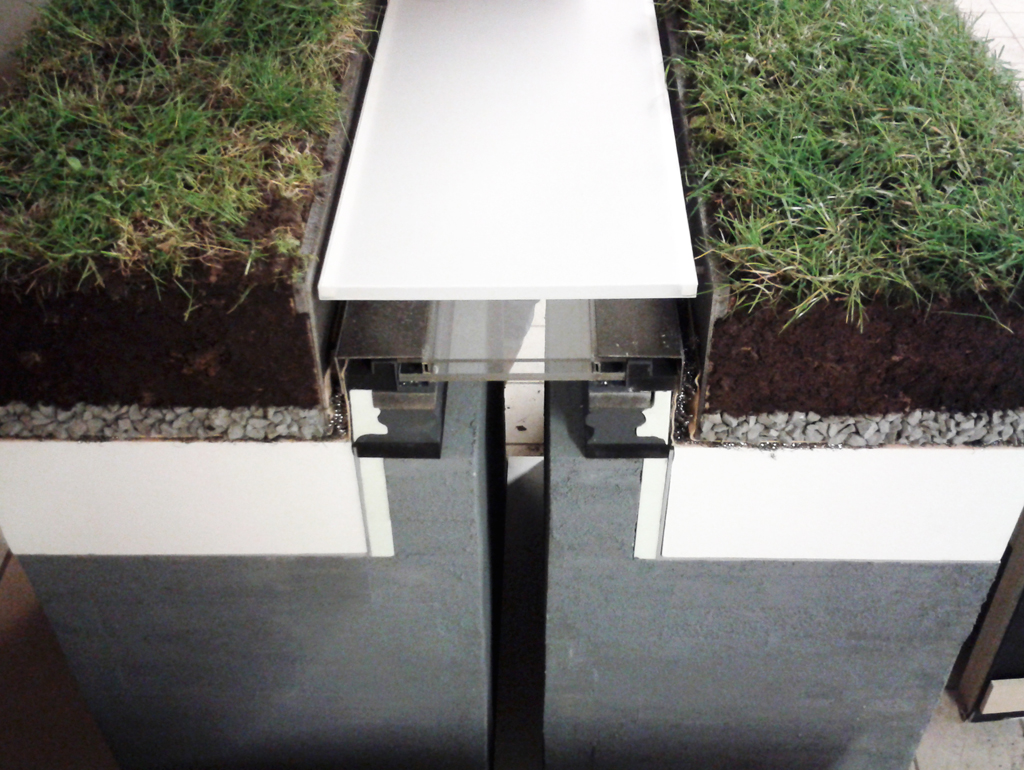Eindhoven University of Technology | Production and Parts
Professor: Jan Schevers
In colaboration with: A.Santarmos
The subject: The aim of the course was the analysis of a detail of a chosen building and the production of its model in 1:1 scale. as the detail should have an impact on the act of making, we chose to analyze the roof detail of the Thermal Baths In Vals.
Architect: Peter Zumthor
Location: Vals, Switzerland
Program Type: Thermal bath/spa
Completion Date: 1996
The detail analysis
The Thermal Baths Vals, the spa complex in the Swiss village of Vals near Chur, is part of the existing hotel complex “Felsen Therme“ which stands in the area since 1960. As the main conceptual idea focuses on the topography of Vals, the bath complex is treated as a volume of rock that is hollowed out of the mountain.This basic idea is followed by all the supplementary features of the building like the texture, the structure and the light. The intimate atmosphere which is created gives a new mystical dimension to the act of bathing.
This monolithic structure is made by the process of hollowing and voiding. The building consists of 15 individual units that are different in shape and size but when coming together they form the roof as parts of a puzzle. In this way, a network of fissures of 6cm that bring natural light to the building is created on the ceiling. These fissures create a ‘dual impression’. On the one hand the roof looks very heavy but on the other, it appears to be floating in the air.
Moreover, the individual slabs are covered with grass in order to give the feeling of the continuation of the green mountain when being seen from the hotel’s balconies. Only the narrow glass lines that cover the fissures in order to protect the inside from the rain water can betray the existence of a building in this site.
The gaps between the slabs are of high importance for the atmosphere created in its interior. The natural light is creating a natural atmosphere while at the same time plays with the humid environment. It reflects in the steam and refracts in the water. Furthermore, the choice of the green roof enhances the main idea of the integration of the building with the natural environment.
For that reasons, we choose to analyze the way that the green roof is developed and the gaps are isolated by the use of glass.

 Natalia Mylonaki
Natalia Mylonaki




